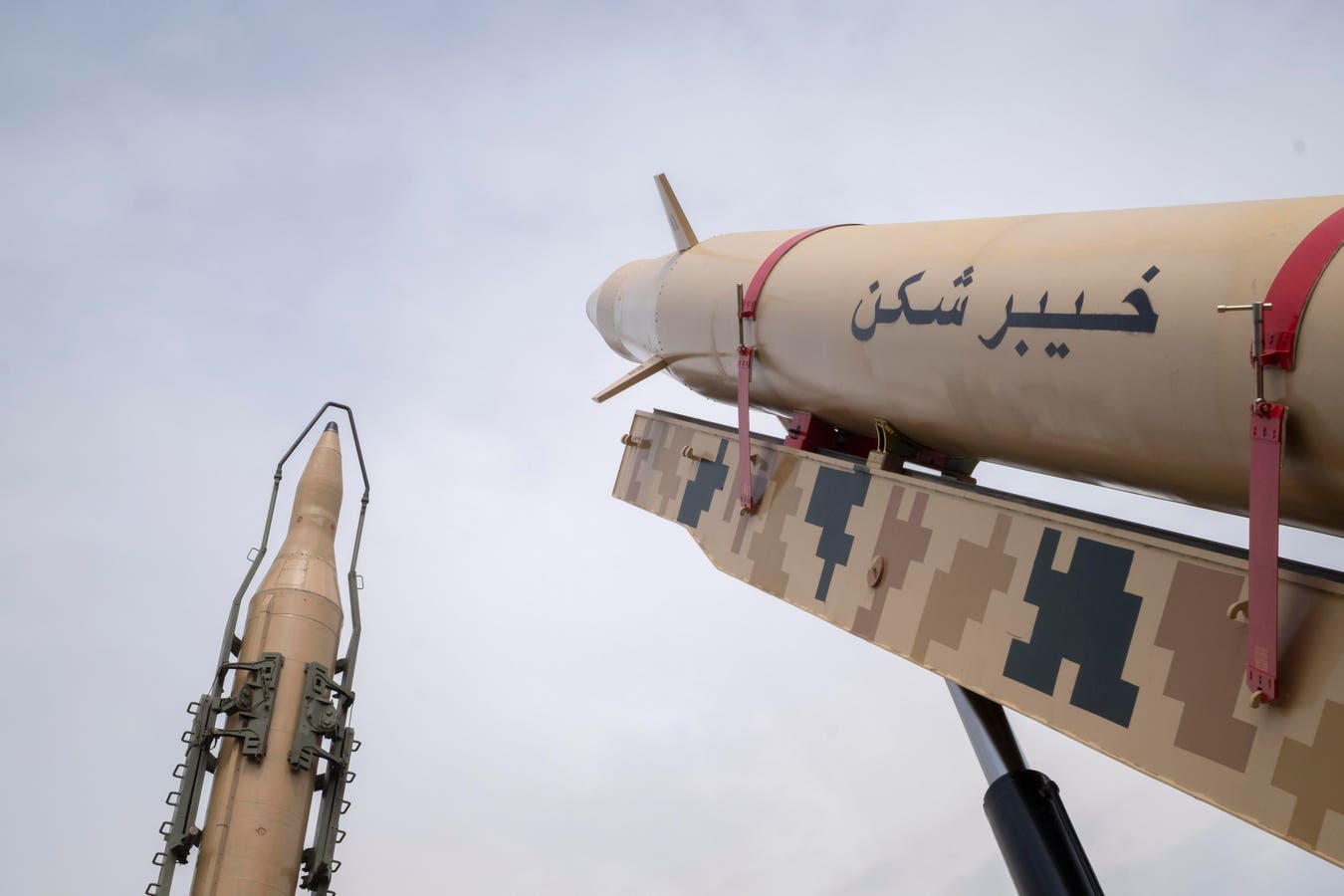Russia recently began firing North Korean-made ballistic missiles into Ukraine for the first time. Moscow’s action is expected to give Pyongyang rare insight into how its homegrown missiles fare against formidable Western-made air defenses. Iran could gain similar insights if it supplies its missiles to Russia in the near future. The U.S. believes Moscow is already seeking Iranian missiles..
The U.S. Ambassador to the United Nations Robert Wood said Russia fired North Korean missiles against Ukraine “on at least nine occasions” as of Feb. 6.
Russia fired North Korean missiles into Ukraine on Dec. 30, Jan. 2, and Jan. 6, among the most intense aerial bombardments against Ukraine since Russia launched its full-scale invasion on Feb. 24, 2022. The White House expects Moscow and Pyongyang “to learn from these launches.” South Korea’s envoy to the United Nations accused North Korea of using “Ukraine as a test site of its nuclear-capable missiles” by supplying them to Russia.
The North Korean missiles Russia has used are structurally similar to Russia’s Iskander short-range ballistic missiles, meaning Pyongyang likely supplied Moscow with KN-23 or KN-24 missiles, known in North Korea as Hwasong-11Ga and Hwasongpho-11Na. There are approximately 100 KN-23s in North Korea’s arsenal.
The White House has publicly stated that Russia seeks “close-range ballistic missiles” from Iran. National Security Council spokesperson John Kirby clarified in a Jan. 4 press briefing that the U.S. does not believe Iran has delivered such missiles. Nevertheless, Washington is “concerned that Russian negotiations to acquire close-range ballistic missiles from Iran are actively advancing.”
Kirby pointed to Russian Defense Minister Sergei Shoigu’s September visit to Iran, where he was shown Iranian-built missiles.
U.S. officials have expressed concerns Russia could receive Iranian short-range ballistic missiles as early as spring but still haven’t seen any evidence indicating a deal has been finalized.
Tehran previously seemed hesitant about supplying Moscow with SRBMs, fearing it would blatantly violate the terms of United Nations Security Council Resolution 2231. That resolution prohibited Iran from exporting SRBMs exceeding the range and payload limitations suggested by the Missile Technology Control Regime, MTCR, until October 2023.
Iran has over 3,000 ballistic missiles in its stockpiles, the largest arsenal in the Middle East. It has already supplied Russia with thousands of Shahed 131/136 loitering munitions and could help shore up Russia’s SRBM arsenal, permitting Moscow to continue large-scale attacks against Ukraine without rapidly depleting its own stockpiles.
While North Korea has frequently tested its nuclear-capable missiles, Ukraine gives it a unique opportunity to see how they fare in a real-world combat situation. Iran, on the other hand, has already used its missiles in various conflicts in the Middle East. In mid-January, missiles launched from western Iran struck targets in Syria’s northwestern Idlib province, over 700 miles away, Iran’s longest-range strike ever.
Consequently, it’s questionable if Iran could learn as much as North Korea from any Russian use of its SRBMs against Ukraine.
Farzin Nadimi, a defense and security analyst and Associate Fellow of the Washington Institute for Near East Policy believes any future use of Iranian SRBMs by Russia would “indeed provide valuable data” on the true capability of these missiles, especially against enemy air defenses.
Russia may also find these missiles much more valuable than the North Korean ones.
“Compared to North Korean missiles, Iranian missiles might be more accurate, if not more reliable, and can carry a more diverse range of warhead options,” Nadimi told me. “They might also be easier to prepare and launch.”
Iran’s Kheibar Shekan missile, unveiled in 2022, is solid-propellant and precision-guided. It can hit targets at a range of 900 miles and even maneuver using its aerodynamic fins, potentially enabling it to evade enemy air defenses as it approaches its target.
“Iranian SRBMs push the range ceiling of the class, and some variants have separating hypersonic reentry sections/warheads, which would be an extremely useful capability in the face of Ukraine’s increasingly capable missile defense network,” Nadimi said.
However, he is skeptical that Iran will supply such a high-end system to Russia. While North Korea has provided missiles with ranges of up to 560 miles, Tehran may not give Russia SRBMs with comparable ranges in adherence to the MTCR’s recommended limit of 186 miles.
“While Iran and Russia will undoubtedly share data and information on how to tackle Western-made missile defenses, that exchange will be mutual, and Iran will have a lot to learn from the experience as well,” Nadimi said.
“Russia will be quite intuitive in how to use those weapons in ways that might be new to Iranians as well.”
Read the full article here





